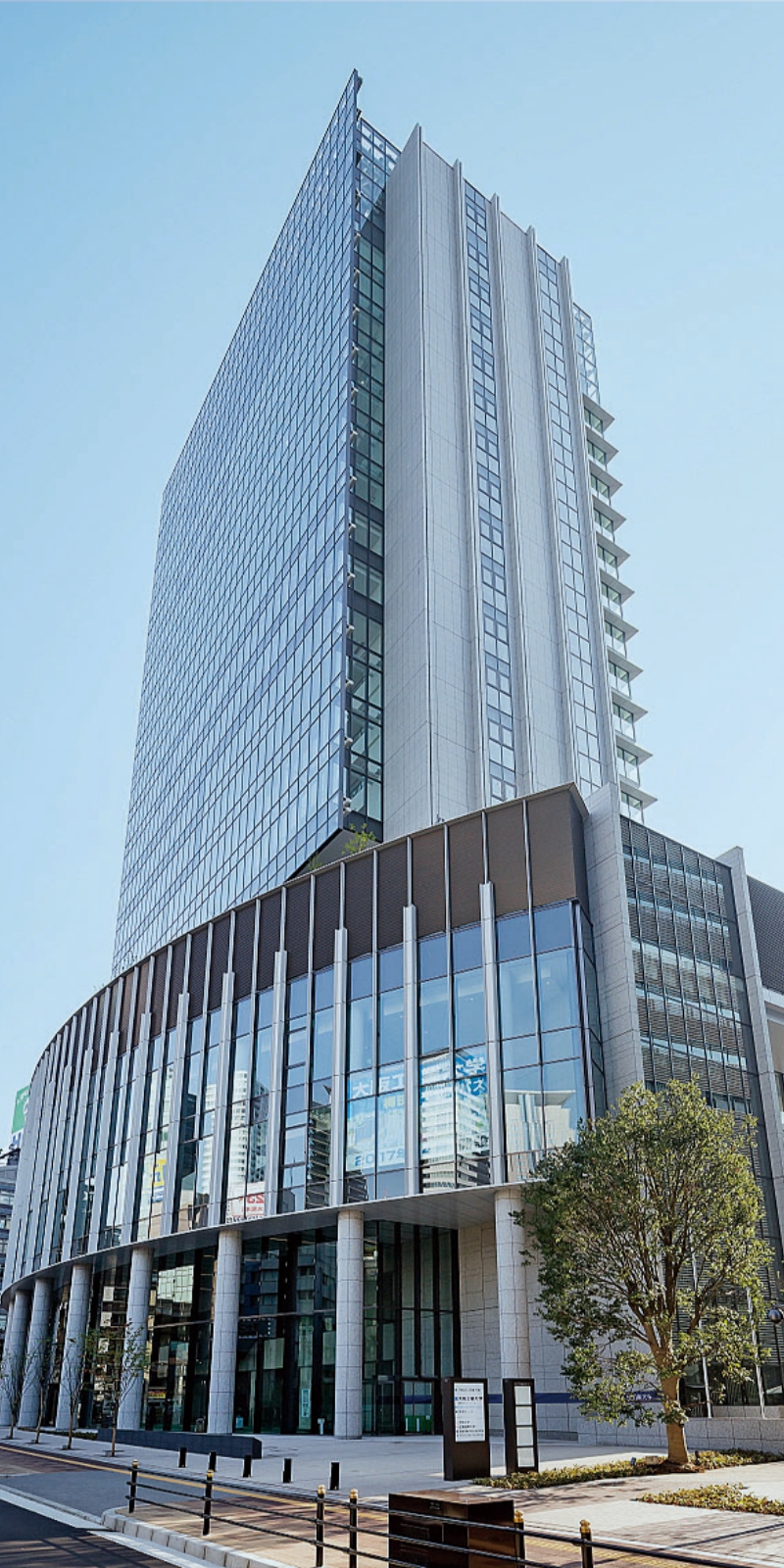Information here is intended for exchange students from partner universities and UMAP member institutions. It is, however, relevant for regular international students and short-term trainees as well, so use it for your reference.
Visa Application
Foreign nationals will need to obtain a visa to enter Japan unless you are exempted from it.
Certificate of Eligibility (COE)
When applying for a visa, it is strongly recommended for you to obtain a Certificate of Eligibility (COE) beforehand. COE is an official document issued by the Immigration Services Agency of Japan, and it has the advantage of reducing the time required to obtain a visa and complete immigration procedures.
OIT will apply for the COE on behalf of the exchange students themselves, and send the COE to your home institution as soon as it has been issued. It normally takes up to 2 months for issuance of the COE.
Visa Application
To apply for the "Student" visa, the students themselves must visit a Japanese embassy or consulate-general in their country and submit COE with other required documents.
It normally takes at least 5 to 8 business days to issue a visa. Since the COVID-19 pandemic, you may need to make an appointment before you visit the embassy or consulate-general of Japan. Please check their Web site for further information.
Make Your Travel Plan
Check the current Japanese border measures here. From April 29, 2023, all the COVID-19 border measures of Japan have been eliminated. Valid vaccination certificate or pre-departure test of COVID-19 is no longer required at entry in Japan.
Dates of Arrival and Departure
Do plan to arrive in Osaka 3 days prior to the starting date of your program.
You need to move out from the dormitory in 3 days after the last day of your program at OIT, so plan your departure day accordingly.
Book Your Flights
Kansai Airport (KIX) is a airport for international flights in Osaka. There is also a domestic airport, Osaka Airport (aka Itami Airport, ITM). If you are taking a connecting flight from Tokyo to Osaka, Osaka Airport is your choice since it's closer to the city center and the dormitory. From Tokyo to Osaka, there is also a bullet train called Shinkansen. From Shin-Osaka Station to the dormitory is very close by JR train.
After you book your flights to Japan, please send a copy of flight information (e.g. e-ticket) to OIT International Office. With that information, we will arrange your dormitory application for you.
Note:
- If you are staying in the dormitory, please be aware that available check-in time is from 9 am to 5 pm. If you arrive late at night, you will be asked to stay in a hotel with your expence.
International Travel Insurance
What to Bring
Clothing
You need to know the climate of Osaka before you pack your clothing in your luggage.
Here is a Web page showing the climate of Kinki district (Kansai region including Osaka):
Summer from July to mid-September is very hot, and winter from late November to mid-March is cold. We also have a rainy season from mid-June to mid-July.
However, you don't need to bring a whole lot of clothing with you because you can always buy here. You have many options of fast fashion in Japan such as UNIQLO. There are also some recycle shops where you can buy secondhand items such as 2nd STREET Reuse Shop.
For your daily necessities, there are Daiso and Can★Do stores where they sell most of items for 110 yen (tax included).
Money
Credit cards and electronic money (e-money) are widely accepted for public transportation and places such as restaurants, super markets, convenience stores, and shops. However, there are still many places they only accept cash. So, it is always good idea to bring enough cash in Japanese yen.
Bank Account: If you are staying in Japan for more than six months, we recommend you to open a bank account in Japan.
AC Plug Adapters
Before Departure
Visit Japan Web
Visit Japan Web is a web service for smooth arrival procedure at airport. This service is for both international travelers and Japanese citizens and this can be used for Immigration and Customs declaration procedures.
Visit Japan Web in English
Visit Japan Web in English
It is strongly recommended the use of Visit Japan Web, as with pre-registration on Visit Japan Web, it will reduce your time for entry at the airport custom.
After Landing
Immigration Check
During your immigration check after the first landing in Japan, show QR codes on the Visit Japan Web screen to an officer and answer to questions.
Residence Card *
* It’s only applicable for a student who enters the country with a visa.
Your COE will be exchanged with "Residence Card" upon your entry in Japan. It contains your personal information such as name, birth date, gender, nationality/region of origin, address, status of residence, period of stay, and whether or not you can work.
Since July 9, 2012, it became possible for a foreign national whose status of residence is "Student" to obtain "permission to engage in an activity other than that permitted under the status of residence previously granted" at the port of entry. However, OIT does not allow exchange students to obtain the permit and work during their stay in Japan.
Living in Osaka
Dormitory
- Available Check-in Date: from 3 days prior to the starting date of your program at OIT
- Available Check-in Time: from 9 am to 5 pm (preferably from 10 am to 4 pm) everyday including weekends
- Check-out: by 3 days after the last day of your program at OIT
- Monthly Rent for International Students: 35,000 yen without utility. No deposit required.
- Payment Method:
(1) cash payment at a convenience store,
(2) smartphone payment applications such as PayPay, or
(3) bank deduction (Senshu Ikeda Bank)
Access from Kansai International Airport
From Kansai International Airport (KIX), it will take about 2 hours to the dormitory by public transportation.
JR (Kansai Airport Rapid Service) & Keihan Railway
- From JR Kansai Airport Station, take the “Kansai Airport Rapid Service” train to Kyobashi Station which takes approx. 75 minutes.
- Walk to Keihan Railway Kyobashi Station and take a local train to Noe Station. *Only local trains stop there.
- Walk along the railroad from Noe Station to the dormitory. For more details, please click here.
We recommend you to buy a ICOCA card for railway ticket at JR Kansai Airport Station. You can buy it from a ticket vending machine and deposit money, then you don't have to buy train or bus tickets every time you ride them.
Cost of Living
| Item | Average Cost |
|---|---|
| Rent for Dormitory | 35,000 yen/month |
| Gas/Electricity | 4,000-6,000 yen/month |
| Water | 1,445- yen/month |
| Mobile Phone | 2,700-3,500 yen/month (for if discount mobile companies) |
| Internet*1 | 4,500- yen/month |
| National Health Insurance | 2,050 yen/month |
| Food | 30,000 yen or more/month |
| Transportation (round trip/day)*2 | Omiya Campus: 360 yen (Keihan Railway: Noe Station-Senbayashi Station) |
| Umeda Campus: 400 yen (JR: JRNoe Station-Osaka Station (via Shin-Osaka Station)) |
|
| Hirakata Campus: 1,340 yen (Keihan Railway: Noe Station-Kuzuha Station Keihan Bus Service: Kuzuha Station-Kitayama-chuo) |
|
| Textbooks | TBD |
*1 Free Wi-Fi is available campus-wide. At the dormitory, free Wi-Fi is only available in the lounge (1st floor).
*2 Monthly commuter pass (1, 3, 6 months) is also available. However, a student commuter pass is not available for exchange students.
Eating Options
- Cafeterias and a cafe on campuse
- Cook simple meals in your dormitory room
- Buy light meals at convenience stores
- Restaurants and cafes around the dormitory or campuses
In general, eating out in Japan is inexpensive compered to Europe or North America. Many exchange students prefer to eat outside and enjoy delicious Japanese food.
Insurances
International Travel Insurance
Payment of medical bills is the students' own responsibility, and OIT cannot provide any financial assistance.
OIT requires all exchange students to be covered by an international travel insurance for the entire period of your study abroad. The coverage must be more than the following table.
| Coverage | Insured Amount |
|---|---|
| Death by Bodily Injury | JPY 1,000,000 |
| Permanent Disability by Bodily Injury | JPY 1,000,000 |
| Injury Treatment | JPY 1,000,000 |
| Illness Treatment | JPY 1,000,000 |
*In case your insurance does not cover all requirements above, you will have to buy a supplemental insurance when you arrive at OIT.
Note:
- Most Japanese clinics and hospitals do not accept private health insurance and do not provide medical services without cash payment. If seeking care under travel insurance, you will need to make full payment for treatment upfront and file a refund application by yourself.
- Private insurance companies often require a medical certificate and receipt for the refund, so it is best to contact your insurance company before visiting a hospital.
National Health Insurance (NHI)
Exchange students who will stay in Japan more than 3 months must join the National Health Insurance (NHI) regardless of the kind of insurance they may already have. This is a strict legal requirement in Japan. Once you arrive in Japan, you must complete the required procedures at your local city/ward office *.
(*OIT staff or student volunteer will support you with the procedures.)
Under NHI, patients need to pay 30% of the total cost of care at clinics and hospitals. More than 90% of Japanese hospitals and clinics, including dental clinics, accept National Health Insurance. NHI also provides benefits for high medical costs associated with surgery and hospitalization.
Premiums are charged monthly. Though costs will vary depending on your annual income and the area you live in, you only pay about 1,800 yen per month if you don’t have a previous year’s income in Japan.
Personal Accident Insurance for Student Pursuing Education and Research "Gakkensai"
"Gakkensai" provides necessary support in the case of accident or injury suffered during activities related to research or education. All exchange students need to purchase this insurance when they arrive at OIT. Premium (JPY 1,000) * will be charged when applying.
*The annual premium is charged even for those who enroll midway through the academic year.
Comprehensive Insurance for Students Lives Coupled with "Gakkensai"
In addition to the Gakkensai, this insurance premium offers comprehensive support in the case of unexpected incidents occurring during student life.
It covers personal compensation responsibility (liability) up to 100,000,000 yen * when the student riding a bicycle and bumping into passers-by and injures them, etc.. It also covers death and physical impediment up to 1,000,000 yen when faced with unlikely emergencies, or when residual disabilities are involved.
*If your international travel insurance doesn’t cover liability up to 100,000,000 yen, you must purchase this insurance.
| 1 month | 390 yen | 7 months | 1,190 yen |
|---|---|---|---|
| 2 month | 560 yen | 8 months | 1,260 yen |
| 3 month | 710 yen | 9 months | 1,350 yen |
| 4 month | 870 yen | 10 months | 1,430 yen |
| 5 month | 1,030 yen | 11 months | 1,500 yen |
| 6 month | 1,110 yen | 1 year | 1,580 yen |
* Bank charge is not included. It costs a couple of hundred yen.
Mobile and Internet
Mobile Phone
We recommend you to make a mobile contract at one of discount mobile phone companies in Japan, for example: "Rakuten Mobile", "UQ mobile" provided by KDDI, "Y!mobile" by SoftBank, and Sakura Mobile. With a new SIM card, you can use your own smart phone in Japan.
Internet
- On campus:
Free Wi-Fi (OIT-AirLAN.1x) is available on campus. - Dormitory:
Free Wi-Fi is only available in the lounge area on the 1st floor. - Other Area:
To use the Internet in your room, you need to make a contract with a service provider at your own cost. You could also make a contract for a mobile WiMAX router or rent it if it’s for short-term.
Getting Around and Commuting
Access to Each Campus
Please refer to the access information shown in the Webpage of International House.
Getting Around in Osaka
Osaka has a highly sophisticated public transportation system. The city is built compactly, and people can get around in the city by foot, train, and bus. Even so, you see many locals riding a bicycle to do daily errands. Those who are thinking to obtain a bicycle for getting around the city and commute to the campuse read below carefully.
Bicycles
- Exchange students are discouraged from using bicycles. Especially the newly arrived students, who may not be used to conditions of Japanese public traffic thus there is a high risk of being involved in an accident. In case of an accident, unless you have an insurance that covers the entire compensation fee, you may need to pay a tremendous amount of fee which may or may not be feasible for an individual to pay.
- All exchange students are asked to purchase inbound insurance specified by OIT when they arrive in Japan. It’s called Comprehensive Insurance for Students Lives Coupled with "Gakkensai." Please refer to the Insurance section of this page for detail.
- Bicycles purchased in Japan must be registered for theft prevention and early detection of stolen bicycles. The registrations fee is JPY 600. When you buy/take over a bicycle from someone, you need to update the registered information. Using a bicycle without updating the registration information is regarded as a theft and you may be penalized.
- Please note riding a bicycle after drinking alcohol, is regarded as drunk-driving and would be penalized. It is also illegal to ride a bicycle with umbrella or to carry another person. Please ride carefully as bicycle accidents can lead to a huge compensation claim.
- Please also be aware that from April 1, 2023, a traffic rule has changed that a bicycle operator shall endeavor to wear a riding helmet (Road Traffic Act Article 63-11 Paragraph 1).
Information Resource for International Students
- STUDY IN JAPAN Basic Guide (Japan Student Services Organization)
- STUDY IN OSAKA (Osaka Global Student Support Association)
- OSAKA INFO (Osaka Convention & Tourism Bureau)
- Osaka Medical Net for Foreigners (Osaka Prefecture)
- A GUIDE FOR LIVING IN OSAKA (City of Osaka)
- Events for International Students (Osaka International House Foundation)






